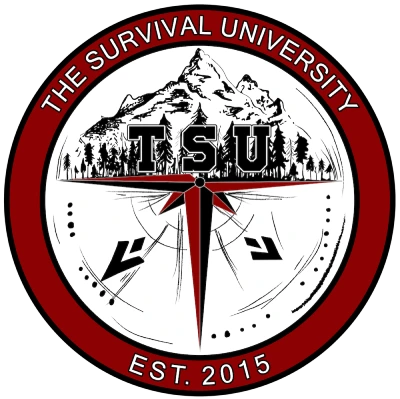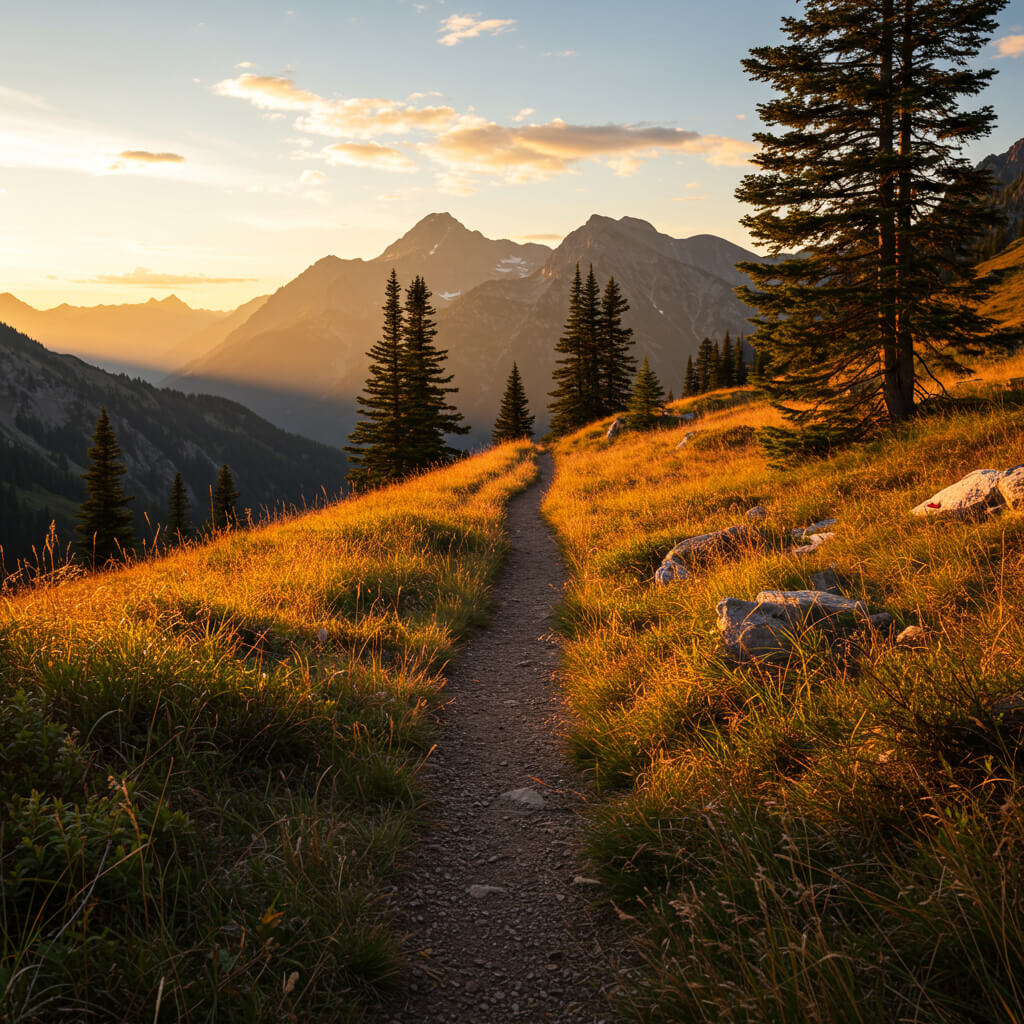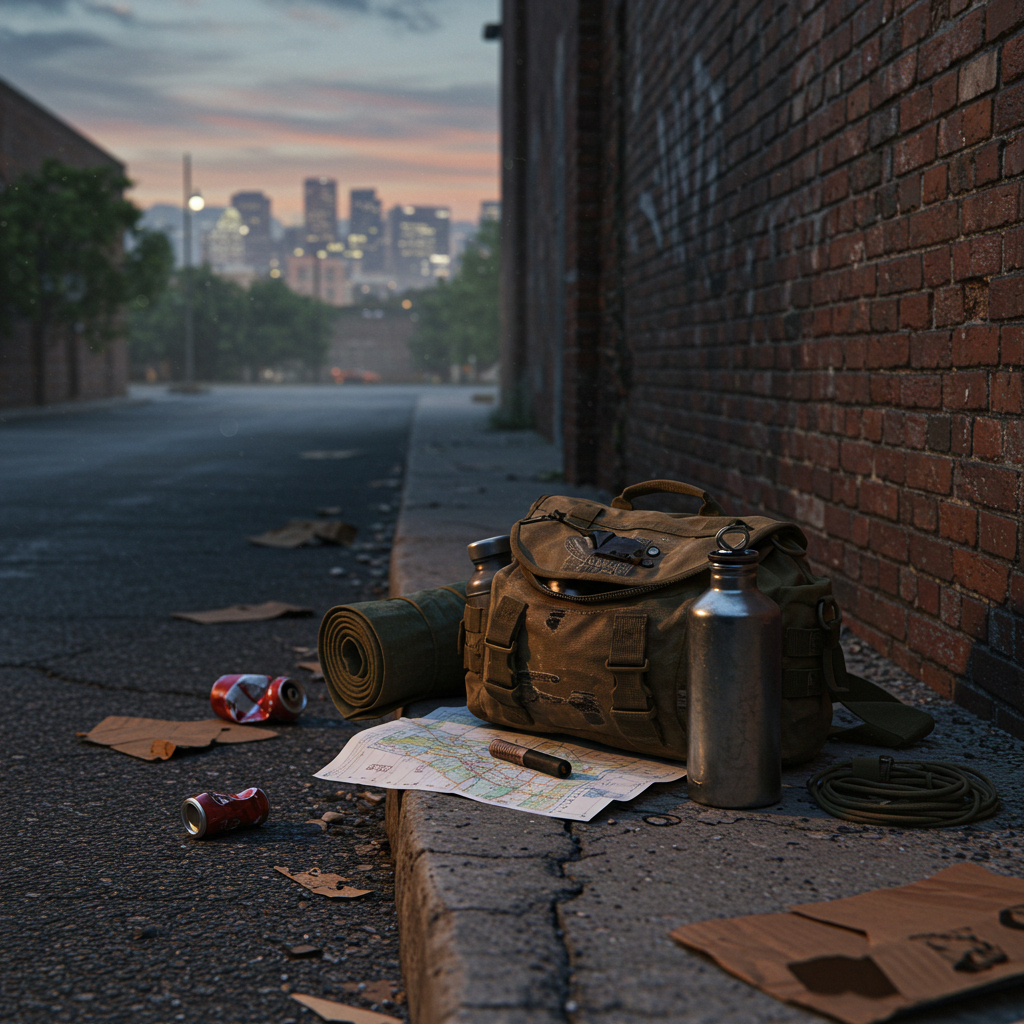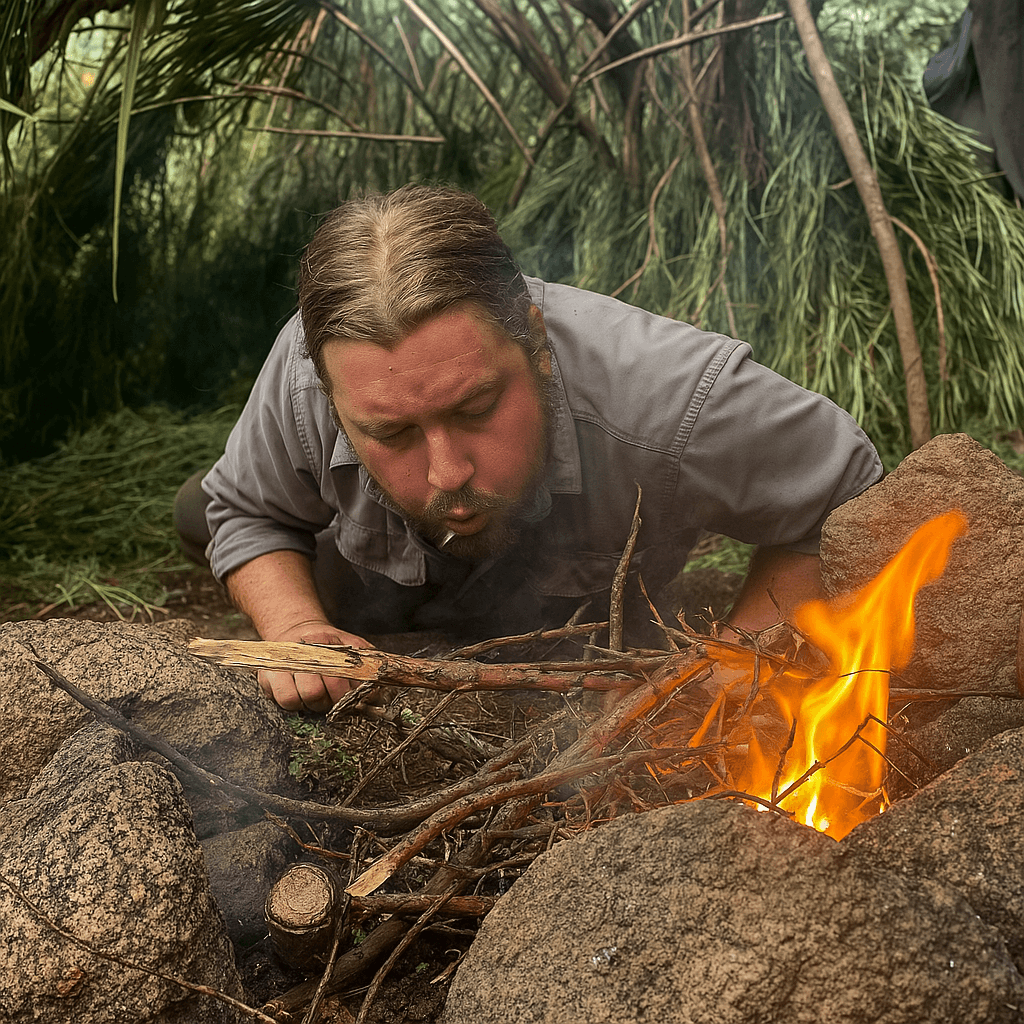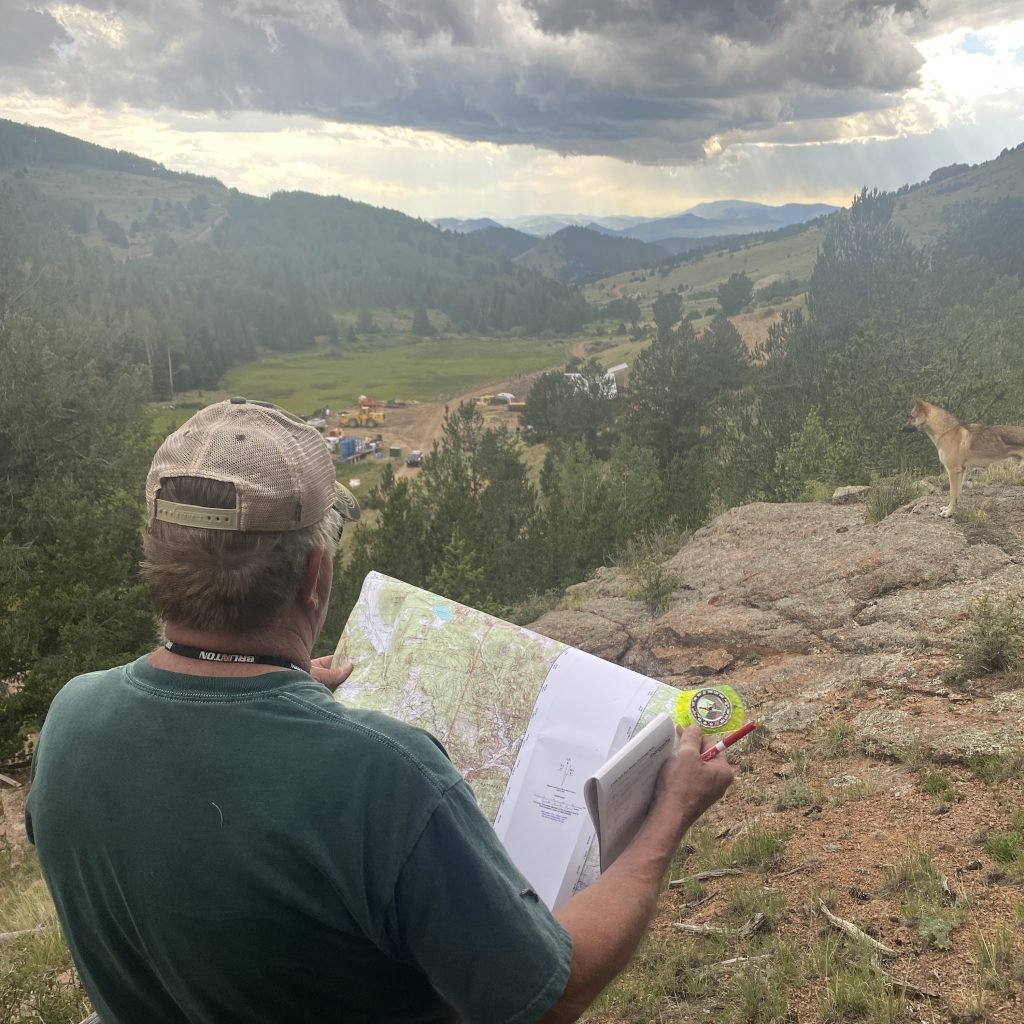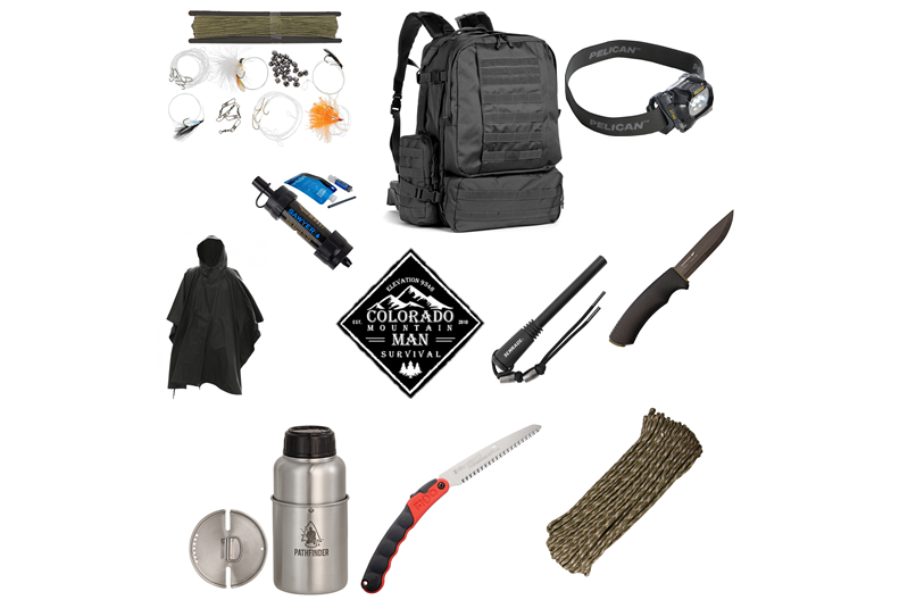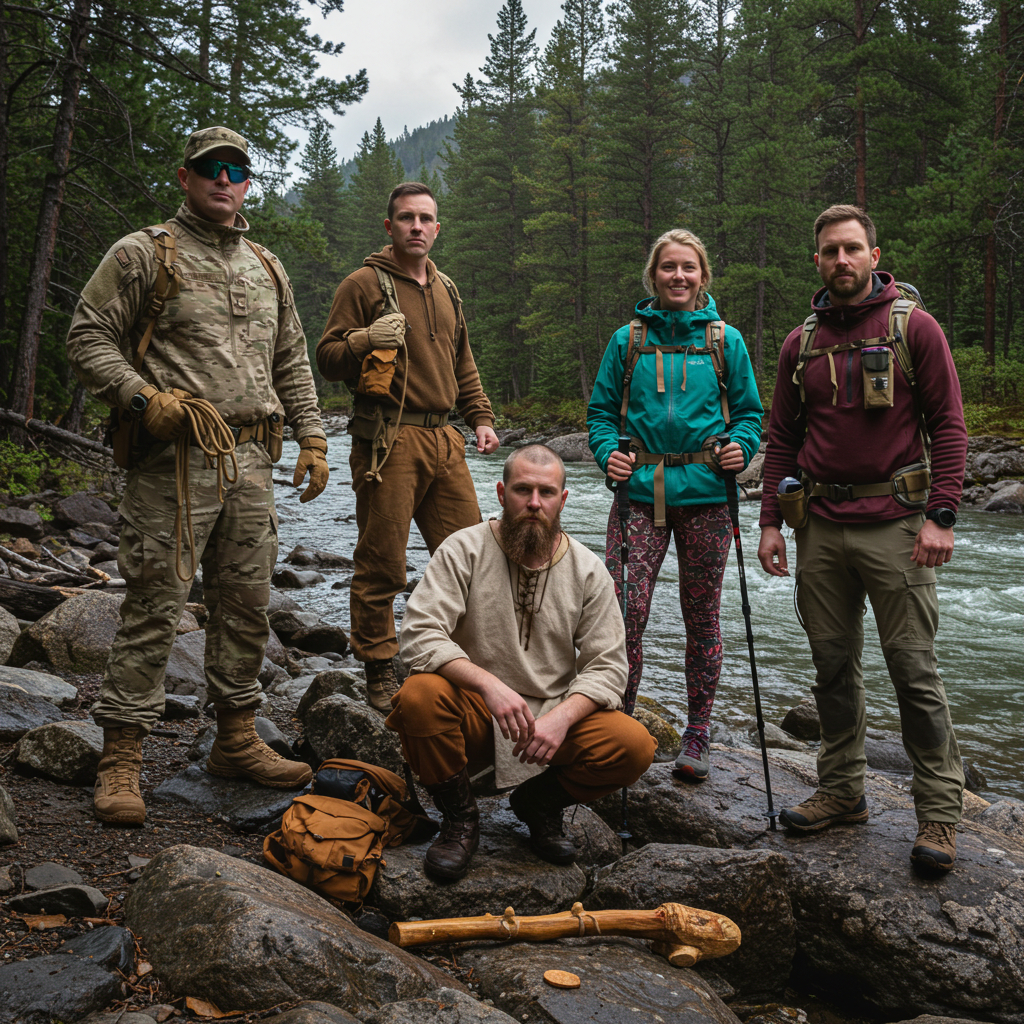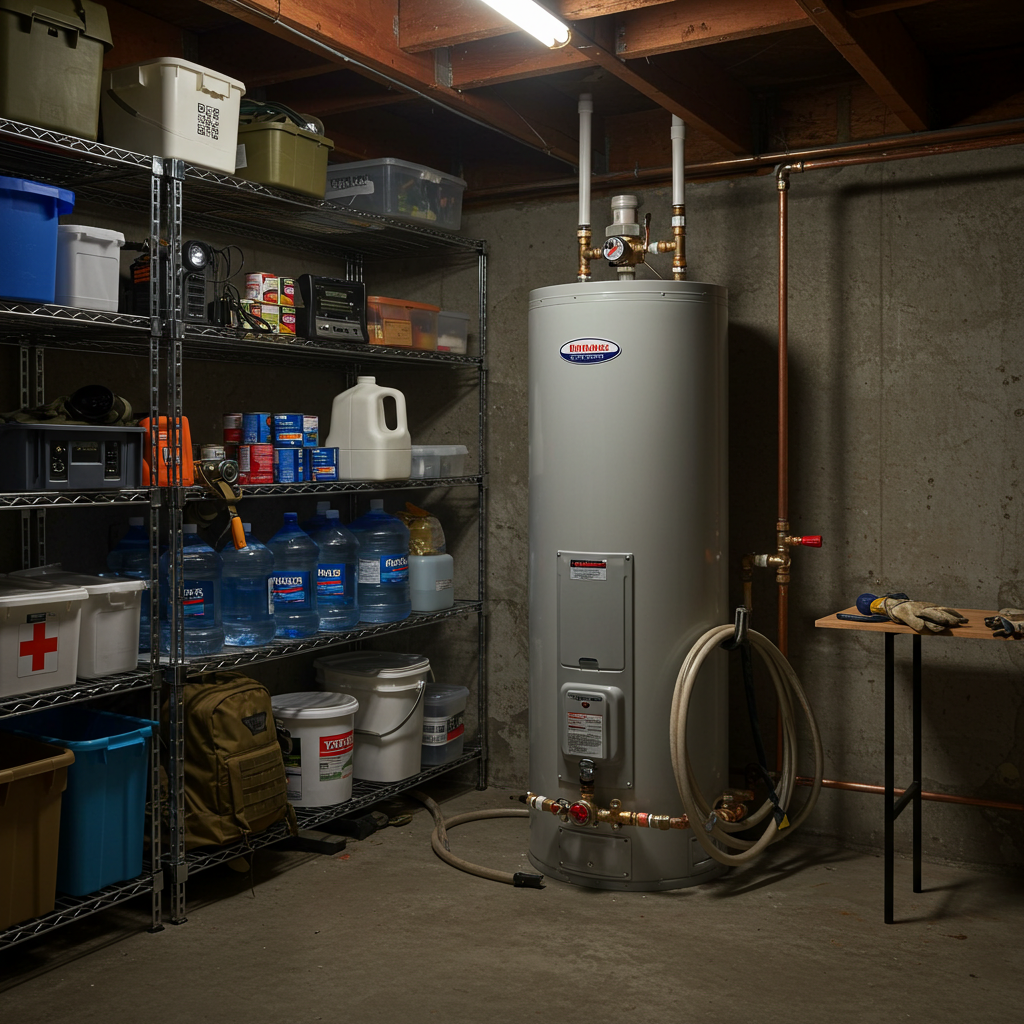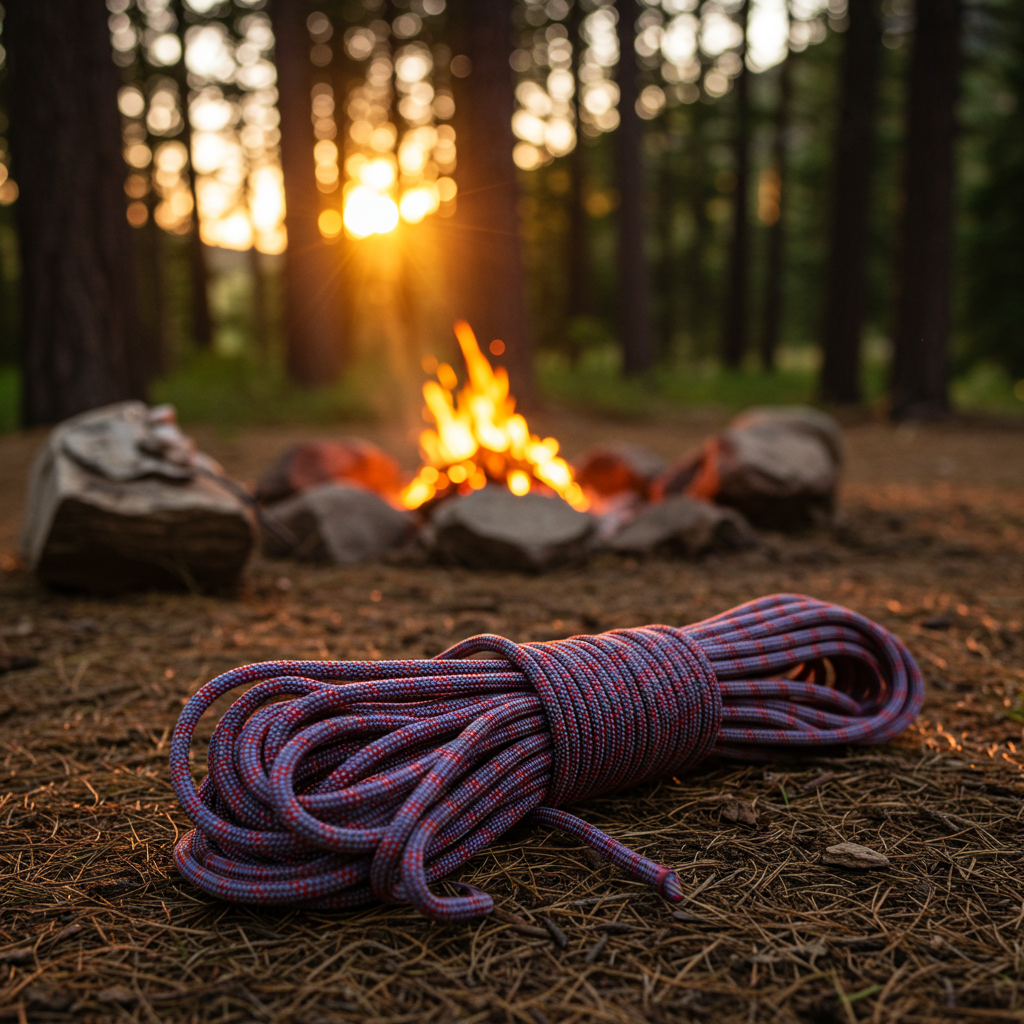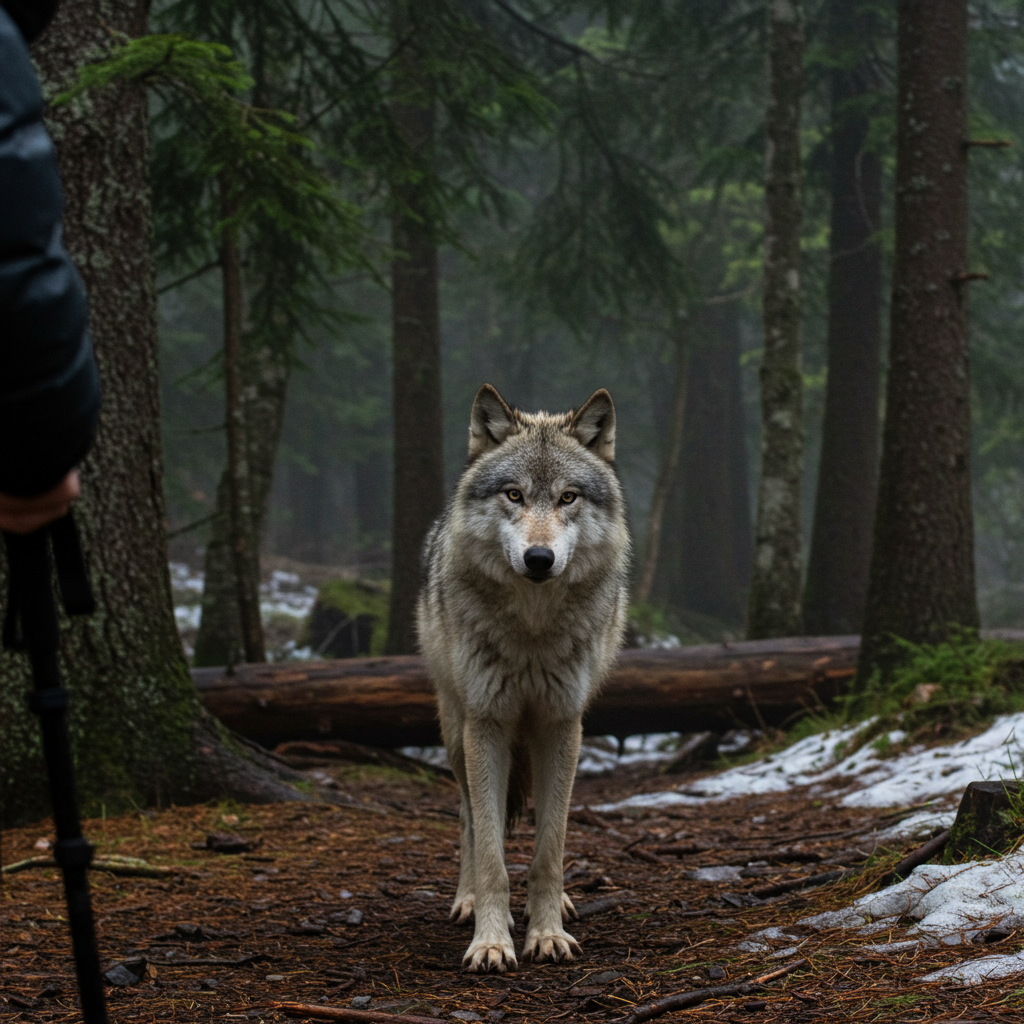Cart
17 min read
Why Every City Dweller Needs Wilderness First Responder Training
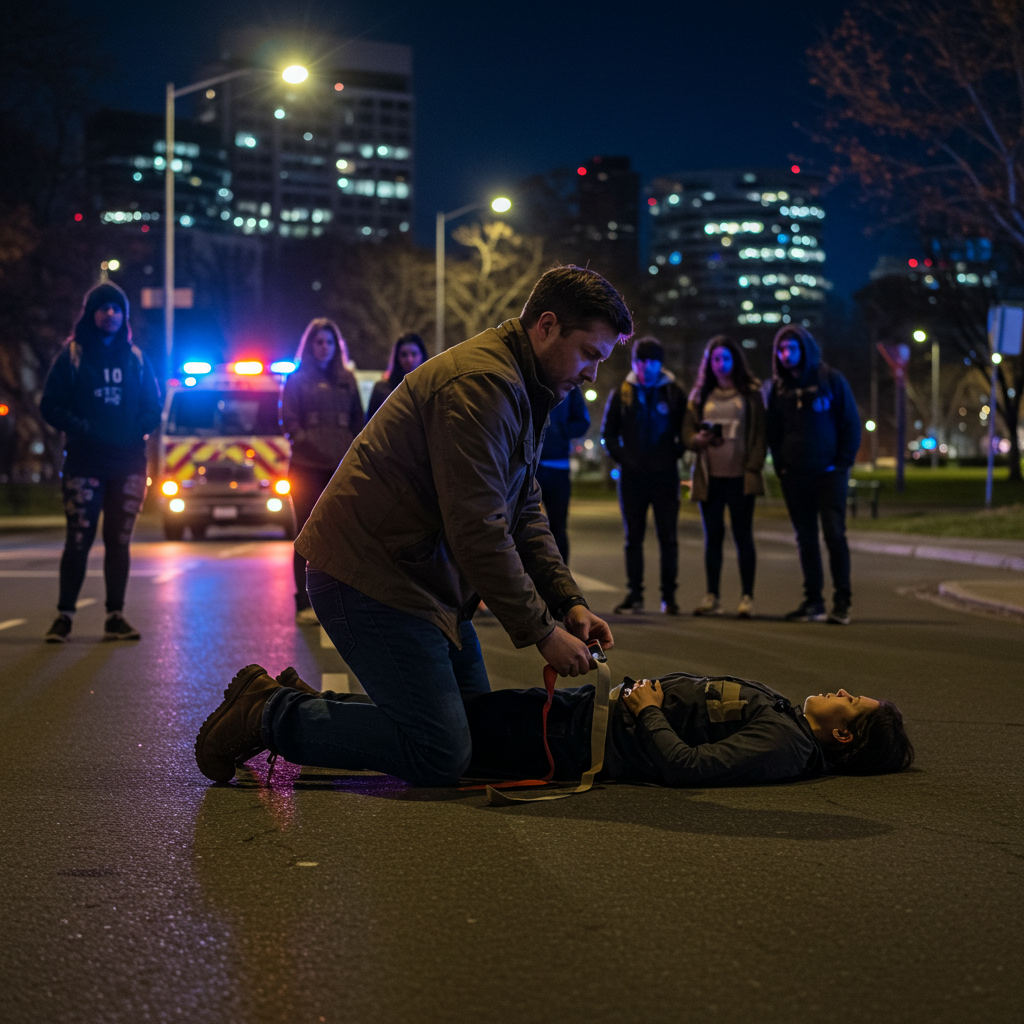
Life-Saving Skills for Everyday Emergencies
Most people assume wilderness medical skills are for survivalists, outdoor guides, and search-and-rescue teams, people who venture deep into the backcountry, miles from civilization. But here’s the reality: medical emergencies happen everywhere, every single day, and they don’t wait for EMS to arrive. 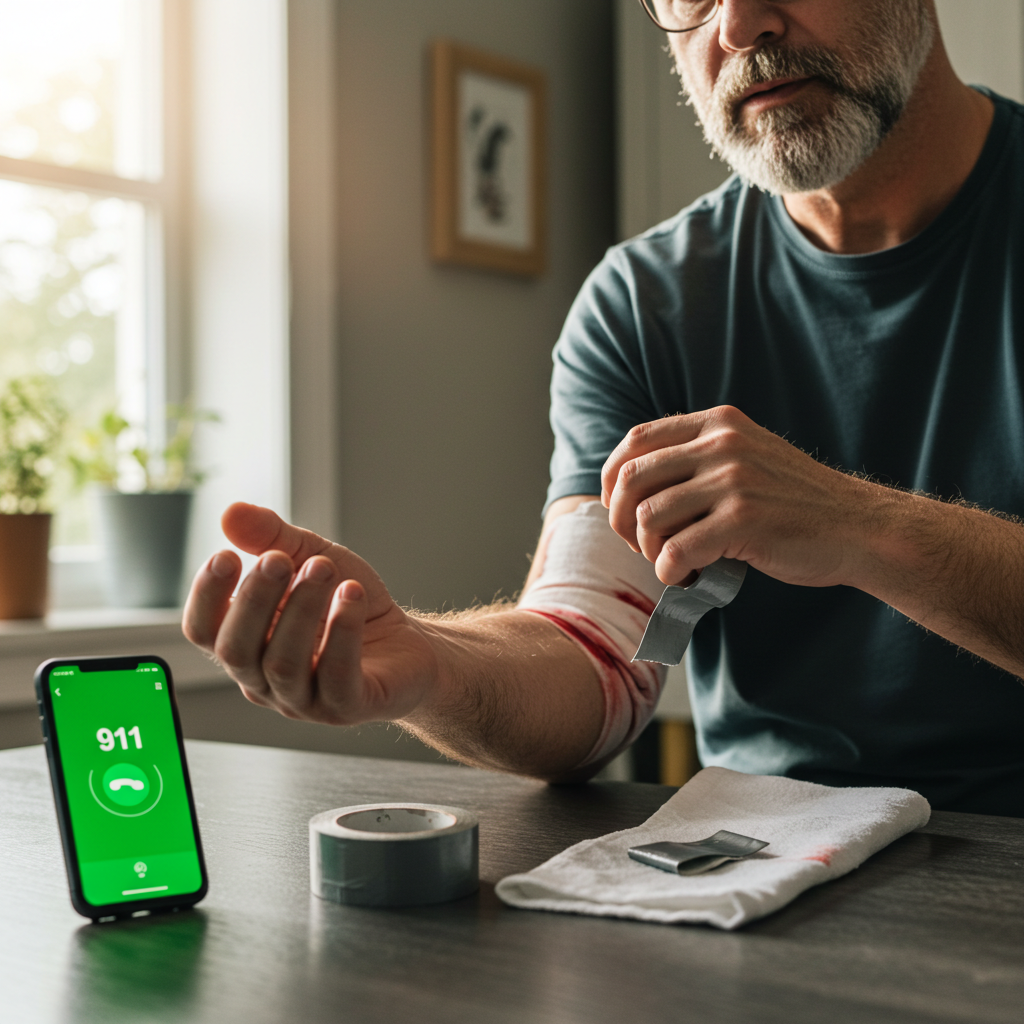 Whether you have a full medical kit or just what's around you, Wilderness First Responder training teaches you how to use both, combining modern techniques with life-saving improvisation.
Whether you have a full medical kit or just what's around you, Wilderness First Responder training teaches you how to use both, combining modern techniques with life-saving improvisation.
In an urban setting, EMS response times average 8 to 12 minutes—and that’s in a best-case scenario, with no traffic, no severe weather, and no system overload. A person can bleed out in under a minute. Brain damage from lack of oxygen starts in four minutes. A heart attack can become fatal in just a few.
What happens when 911 is too far away?
That’s where Wilderness First Responder (WFR) training comes in. It was designed for remote environments, where professional medical help is hours—or even days—away. But the same skills that save lives in the backcountry can be just as critical in a city, a small town, or even your own home.
When 911 Is Too Far Away
You’re sitting in a restaurant, enjoying your meal, when a sudden, violent sound breaks through the low hum of conversation. A man at the next table lurches forward, knocking over his glass. His hands fly to his throat, his eyes wide with panic. His face, once flushed with laughter, is now turning an alarming shade of red. His mouth opens, but no sound escapes.
the low hum of conversation. A man at the next table lurches forward, knocking over his glass. His hands fly to his throat, his eyes wide with panic. His face, once flushed with laughter, is now turning an alarming shade of red. His mouth opens, but no sound escapes.
At first, people don’t seem to realize what’s happening. A woman at his table gasps, pushing back her chair. A man nearby stiffens, eyes darting around for someone—anyone—to do something. Then, the realization spreads like wildfire. Someone yells, "He’s choking!" but no one moves. The shock is paralyzing.
The server hesitates, fingers hovering over the screen of their phone, but what good is a call to 911? An ambulance is at least ten minutes away—assuming it gets through immediately. The man doesn’t have ten minutes. His red face deepens to purple. His body convulses as he struggles for air. His eyes plead for help.
The entire restaurant holds its breath. Seconds tick by like hours. Can he survive long enough? Or will this ordinary dinner turn into his last meal?
You’re driving home, the road slick from the rain, when suddenly, the SUV in front of you swerves. The tires lose grip. For a split second, the vehicle seems to float—then chaos erupts. The SUV fishtails violently, veers sideways, and flips. Once. Twice. Metal crumples, glass shatters. Then silence. It lands upside down in a ditch, steam rising from the wreckage.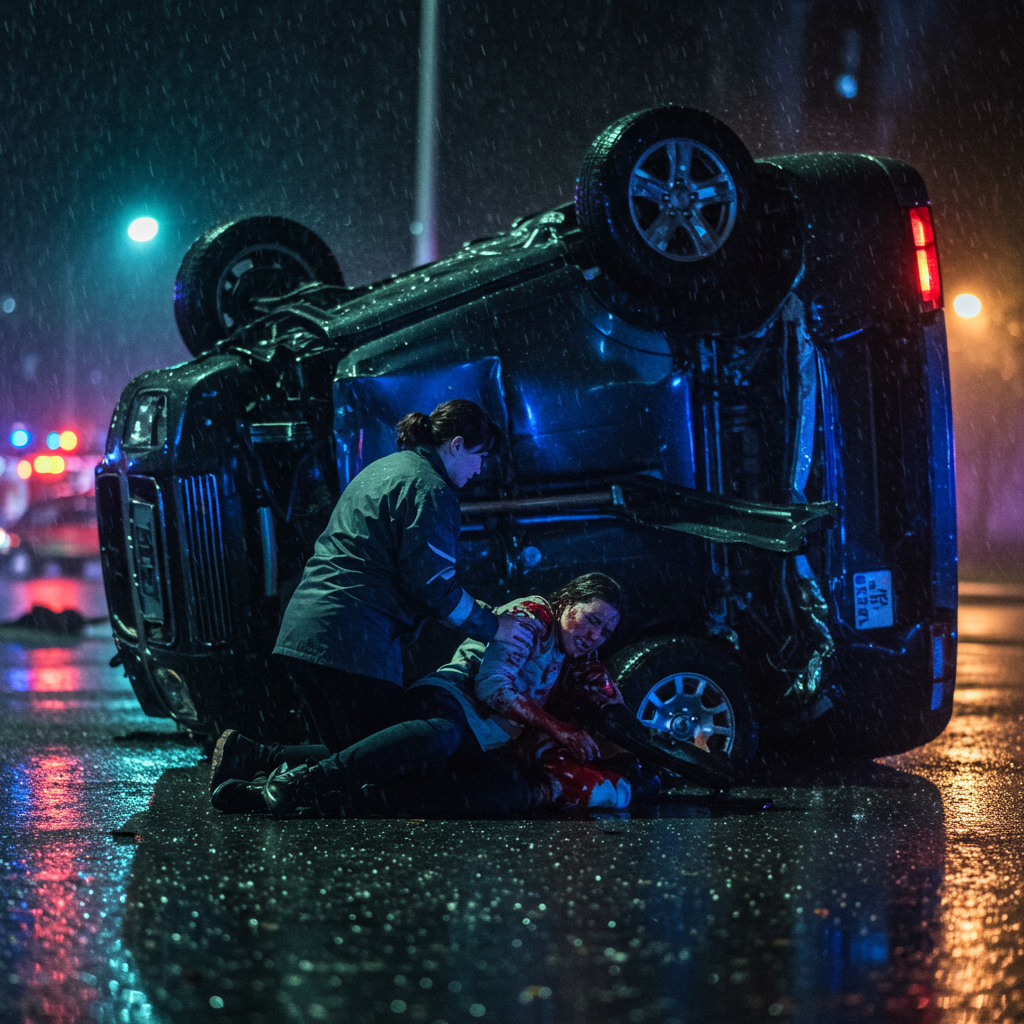
Your heart pounds as you pull over, barely registering the rain hammering against your windshield. You throw the door open and rush toward the overturned vehicle. Inside, a woman is trapped, her face contorted in pain. Blood runs down her leg—too much blood. It soaks through her jeans, pooling on the ceiling of the flipped SUV. She’s losing it fast.
A man nearby is already on the phone, his voice urgent. "Yes! A bad crash—she’s bleeding a lot! Hurry!"
The dispatcher assures him help is on the way. But traffic is thick, headlights barely inching forward in the distance. The nearest hospital is five minutes away on a good day. But today?
You glance back at the woman. Her breaths are quick and shallow, her skin pale. The rain mixes with the blood, washing it into the grass.
How much can she afford to lose before help arrives?
You’re at the park when a friend suddenly collapses, clutching their chest. They struggle to breathe, their skin turning pale. Someone shouts, “Does anyone know CPR?”
Do you?
We rely on emergency services to save lives, but when disaster strikes, every second feels like an eternity. When seconds count, minutes are too long to wait—and in those crucial moments, hesitation can mean the difference between life and death. WFR training doesn’t just prepare you; it empowers you. It teaches you how to stay calm under pressure, assess injuries, control bleeding, and take decisive action when every heartbeat matters. Instead of standing by, frozen in fear, you become the person who steps up, the one who knows exactly what to do when it matters most.
Why Urbanites Need WFR Training
Medical Emergencies Happen Everywhere, Not Just in the Wilderness
Most people assume that if something goes wrong, they can just call 911 and wait. But what happens when you don’t have that luxury?
- A coworker slips at a construction site, hitting their head and going unconscious. Do you know how to assess their condition and respond before help arrives?
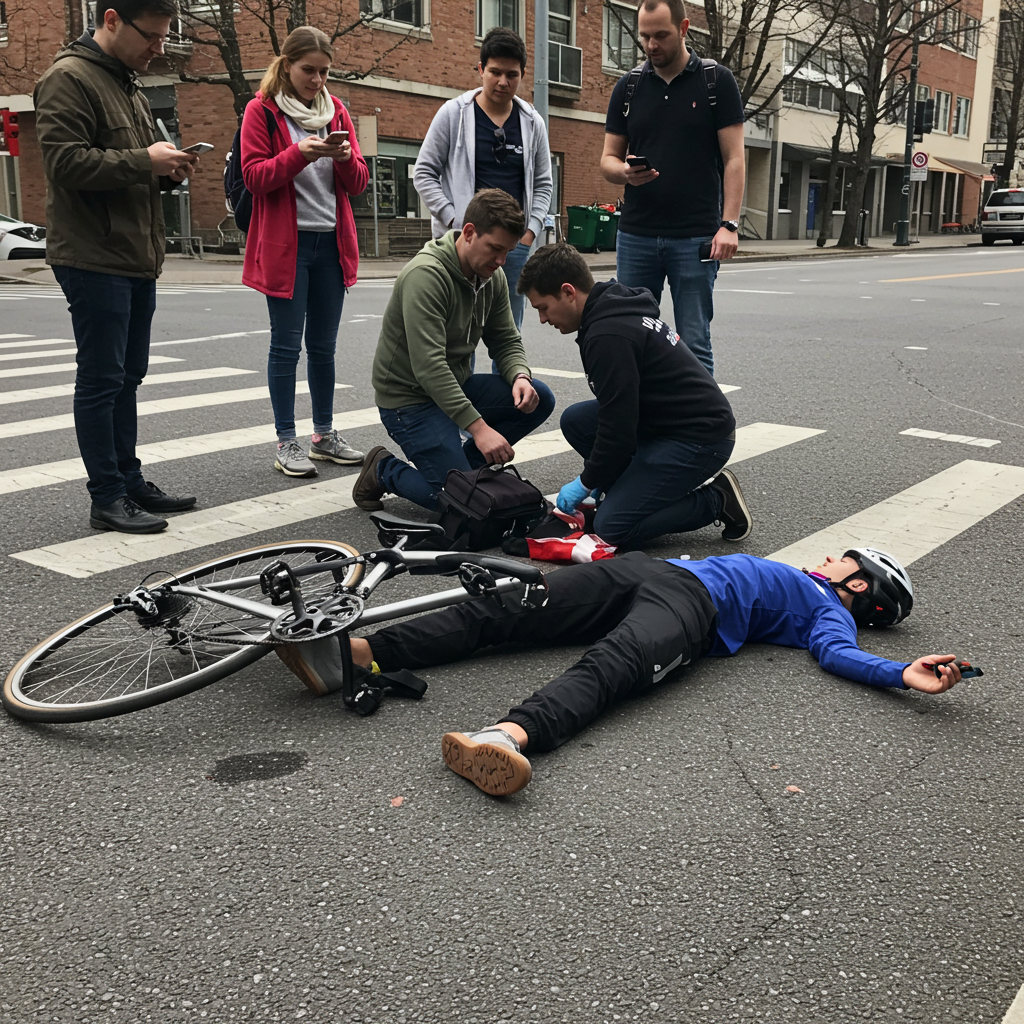
- You're out for an evening run in the park when you hear a loud crash—a cyclist has collided with a car at an intersection. The rider is on the pavement, clutching their arm, but it’s their leg that worries you. A deep gash is pouring blood onto the asphalt. A few bystanders pull out their phones to call 911, or are they just filming? No one moves to help.
Do you know how to stop the bleeding before they lose too much blood? Do you know how to prevent them from going into shock?
- You’re walking through a crowded subway station when an elderly man suddenly crumples to the ground. His breathing is shallow, his skin looks pale, and his lips are turning blue. Bystanders hesitate, unsure of what to do. Did someone call 911? Its with rush hour traffic, paramedics could take 15 minutes or longer to arrive.
Is it a heart attack? A stroke? A diabetic emergency? Do you know how to tell the difference—and what to do next?
Basic first aid isn’t enough in these situations. WFR training teaches you to assess injuries, act under pressure, and make decisions in real-world emergencies—no matter where they happen.
Bleeding Control: Because You Only Have Seconds
One of the most valuable skills you’ll gain in WFR training is how to stop life-threatening bleeding, because when someone is critically injured, every second counts. A severed artery can lead to unconsciousness in under 30 seconds, and complete blood loss in less than a minute—long before an ambulance even gets dispatched, let alone arrives. In those moments, there’s no time to wait for help.
Knowing how to recognize severe bleeding, apply direct pressure, pack a wound, or use a tourniquet can mean the difference between life and death. A simple mistake—hesitating, fumbling with a bandage, or applying pressure incorrectly—can cost someone their life. But with WFR training, you won’t have to guess. You’ll have the confidence and hands-on experience to react immediately, taking control of the situation instead of watching helplessly.
Because in an emergency, you don’t rise to the occasion—you fall back on your training. And without it, you have nothing to fall back on.
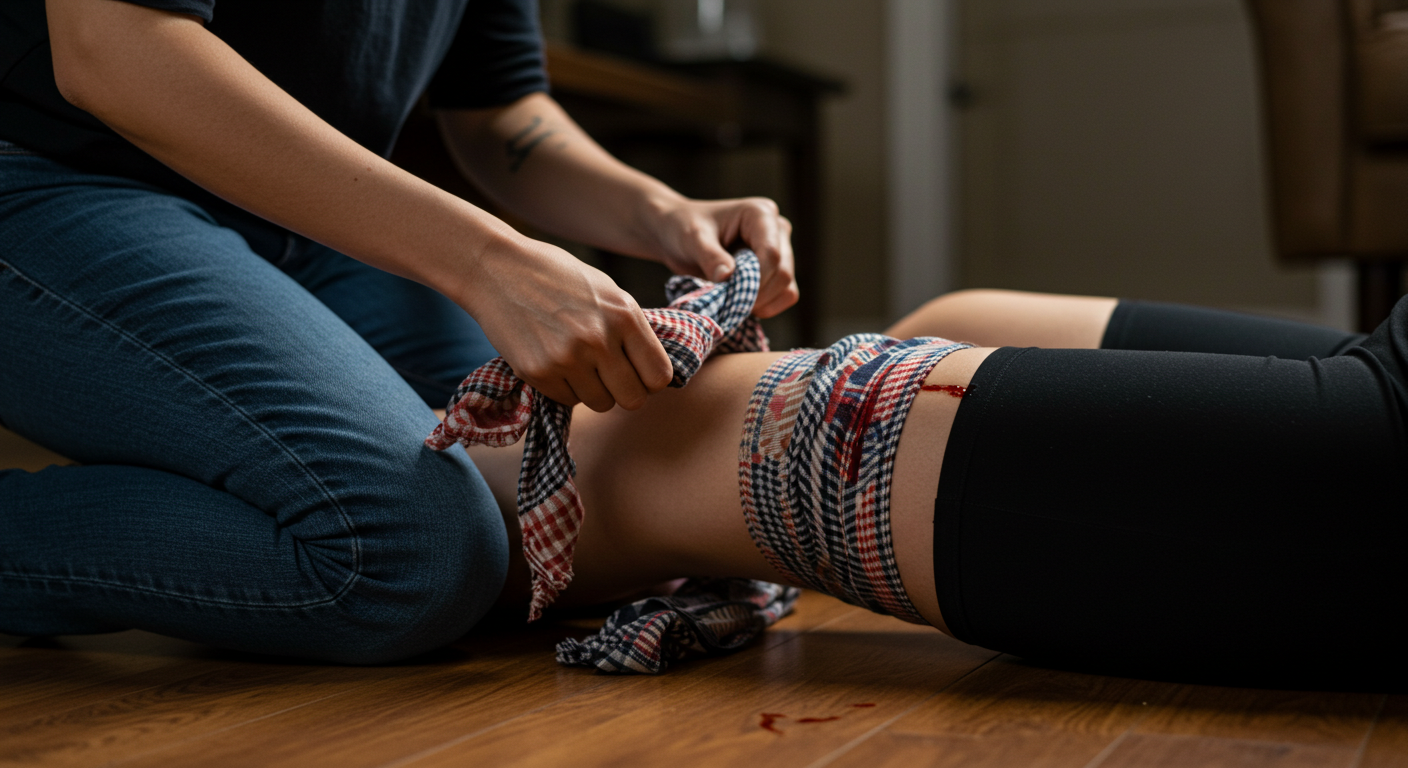
Using Tourniquets Effectively (Most People Do This Wrong)
Many people assume that simply wrapping a tourniquet around a limb will stop severe bleeding, but improper placement or insufficient pressure can make the situation worse. In WFR training, you’ll learn exactly where and how to place a tourniquet to fully stop arterial bleeding. You’ll also practice tightening it correctly—because if it doesn’t hurt, it’s not tight enough. You’ll learn when to apply a tourniquet, when to remove one, and how long a limb can safely be restricted before complications arise. If a commercial tourniquet isn’t available, you’ll practice improvising with belts, scarves, or strips of fabric.
Applying Pressure Properly with Gauze or Improvised Materials
Stopping severe bleeding isn’t just about covering a wound—it’s about applying the right kind of pressure in the right place. You’ll practice using hemostatic gauze, packing deep wounds, and applying firm, direct pressure to control hemorrhaging. You’ll also learn how to use improvised materials, like a clean shirt or bandana, to create a pressure dressing when medical supplies aren’t available. This skill is critical in chaotic situations, whether it's a car accident, a workplace injury, or an unexpected act of violence.
Managing Shock to Prevent Further Deterioration
Even after bleeding is controlled, the body can still shut down due to shock—a condition where blood circulation drops, leading to organ failure and death if untreated. You’ll learn how to recognize early signs of shock, such as pale skin, confusion, and rapid breathing, and take immediate steps to stabilize the person. This includes elevating the legs, keeping them warm, and ensuring they stay conscious and responsive. Managing shock correctly can buy valuable time while waiting for emergency responders to arrive.
Why These Skills Matter Everywhere
These aren’t just backcountry survival techniques—they’re life-saving skills for everyday emergencies. Consider:
- An active shooter incident: People are injured, and emergency responders are delayed. Knowing how to stop bleeding and prevent shock could save multiple lives.
- A car crash: A victim is bleeding out, trapped in their vehicle. You’re the first person there—do you know what to do?
- A worksite accident: A deep cut from machinery leads to massive bleeding before paramedics arrive. Can you act fast enough to prevent fatal blood loss?
When seconds count, waiting for EMS isn’t an option. WFR training ensures you’re ready to step in and take action—wherever you are.
Improvisation When You Have No Medical Gear
Most first aid classes focus on using medical kits—tourniquets, sterile gauze, compression bandages, splints, and oxygen masks.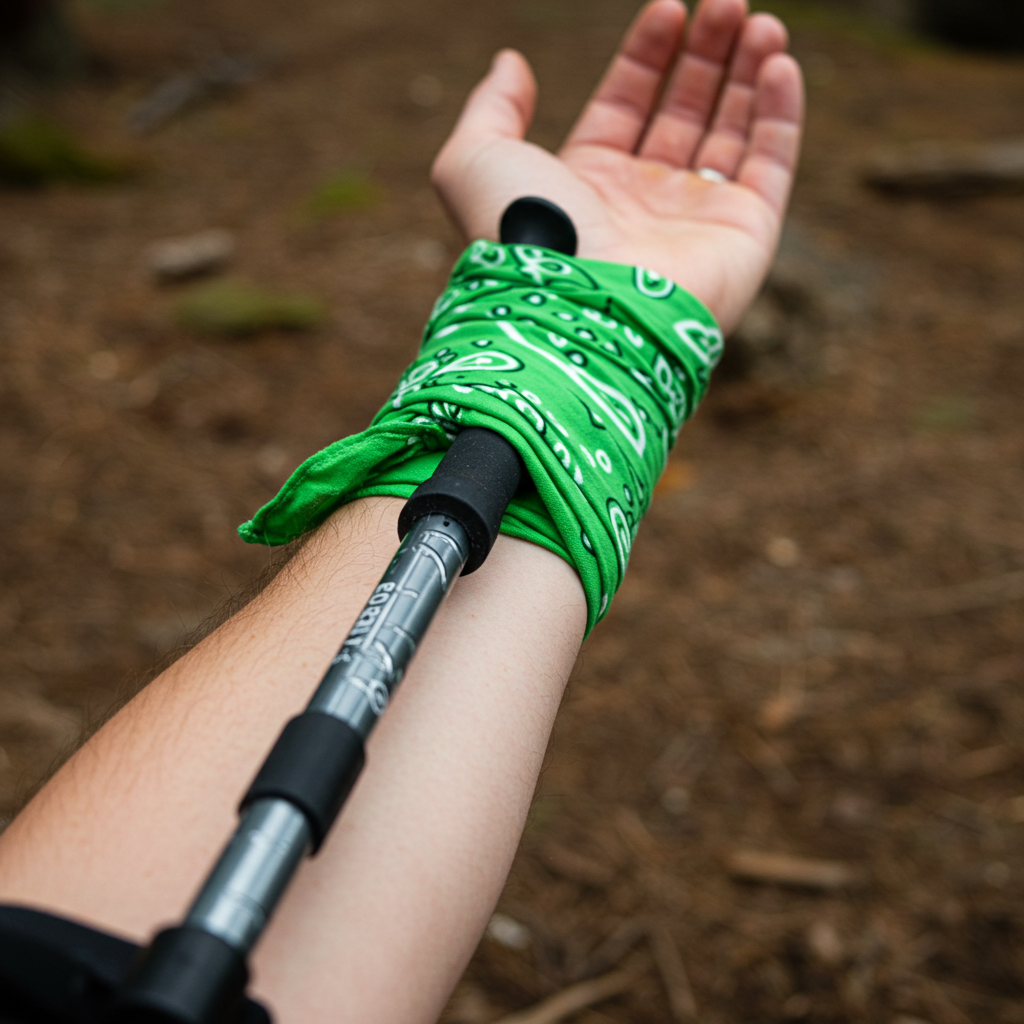 But real-world emergencies don’t always happen next to a fully stocked first aid bag. What happens when you’re in a car accident with no med kit? Or at a restaurant when someone collapses, and all you have are the items around you?
But real-world emergencies don’t always happen next to a fully stocked first aid bag. What happens when you’re in a car accident with no med kit? Or at a restaurant when someone collapses, and all you have are the items around you?
Wilderness First Responder (WFR) training goes beyond traditional first aid by teaching you how to make do with what you have. Improvisation isn’t just a survival skill—it’s a lifesaving skill in any setting, whether you’re deep in the woods or standing on a city sidewalk.
What Do You Do When You Don’t Have Supplies?
In a crisis, quick thinking and resourcefulness can be the difference between life and death. WFR training teaches you how to assess the situation and use whatever is available to stabilize someone until professional help arrives.
Shirts and Belts as Tourniquets
Massive bleeding requires immediate action, and a proper tourniquet is the best tool to stop blood loss from an arterial wound. But what if you don’t have one?
- A tightly wound shirt, bandana, or scarf can act as a pressure wrap.
- A belt can be used as a makeshift tourniquet—but only if it can be tightened properly.
- A stick, pen, or sturdy utensil can act as a windlass to create the pressure needed to stop arterial bleeding.
Most people apply tourniquets incorrectly, either placing them too low, too loose, or failing to tighten them enough. In WFR training, you’ll practice real-world applications, ensuring you know exactly how to improvise one in an emergency.
Hiking Poles or Magazines as Splints
Broken bones and severe sprains need stabilization. Without a proper splint, even a simple fracture can worsen with movement. In a wilderness setting or even in your own back yard, you might not have pre-made splints, but you can use:
- Hiking poles, sticks, or even a rolled-up magazine to immobilize a limb.
- T-shirts, shoelaces, or duct tape to secure the splint in place.
- A backpack or rolled-up jacket to support an injured arm in a sling.
This skill isn’t just for outdoor hikers—it applies anywhere, from sports injuries in a park to urban disasters where emergency services are delayed.
Duct Tape and Plastic Bags to Seal Wounds
If someone suffers a deep wound or an open chest injury, keeping air and bacteria out is critical. Without medical dressings, WFR training teaches you to get creative:
- Duct tape and a plastic bag can create an airtight seal for a sucking chest wound, preventing further lung collapse.
- A clean plastic wrapper or foil can act as an improvised wound covering.
- Superglue (in non-toxic medical forms) can help close small but deep lacerations when stitches aren’t an option.
These aren’t just theoretical skills—they’re hands-on techniques you’ll practice in WFR scenarios.
This Isn’t Just a Backcountry Skill—It’s a Real-World Survival Skill
Improvised medical care isn’t just for those stranded in the wilderness—it’s for anyone who could find themselves in a situation where help isn’t coming fast enough. Imagine these real-life moments: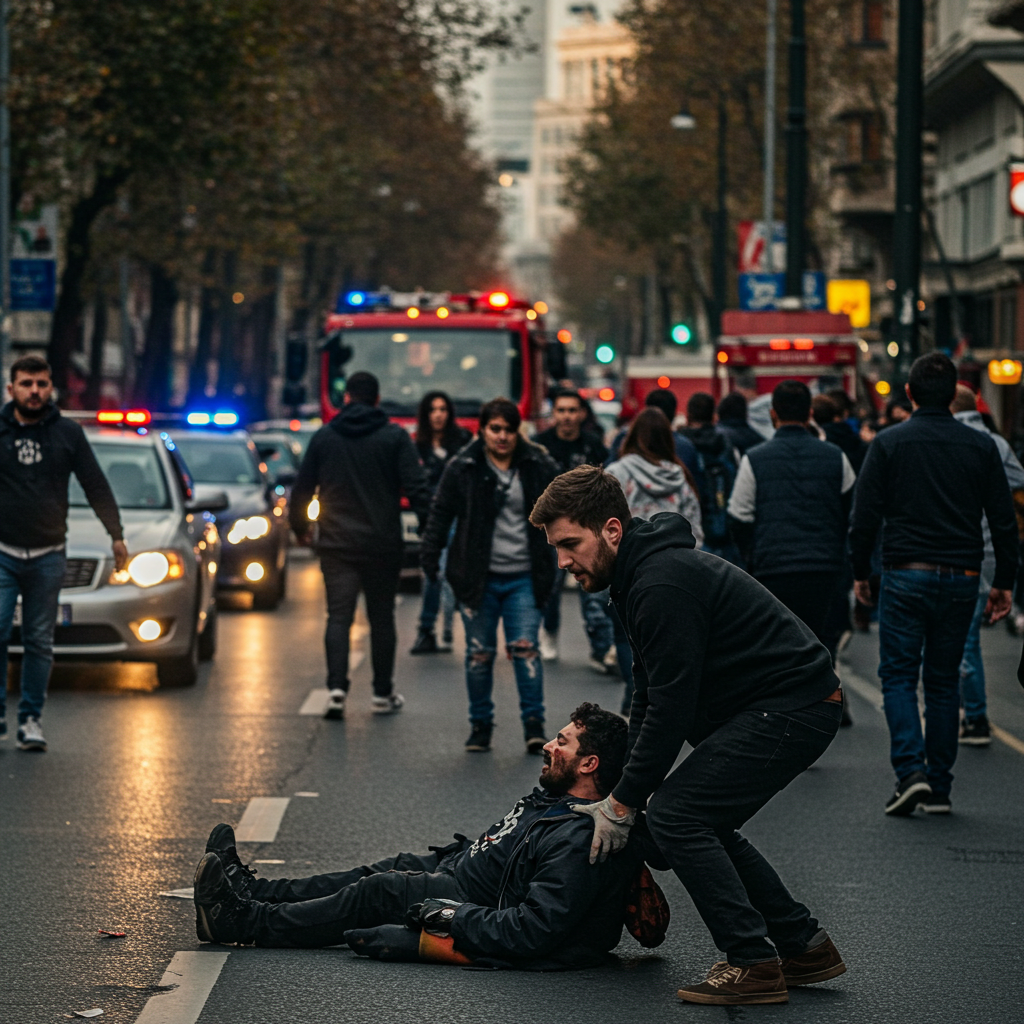
- A natural disaster rips through your city. Roads are impassable, cell towers are down, emergency rooms are overwhelmed, and ambulances are nowhere to be found. Your neighbor is bleeding badly from storm debris, but 911 is unreachable. What do you do?
- A mass casualty event unfolds before your eyes—an explosion, an active shooter, a building collapse. Chaos erupts as sirens wail in the distance, but emergency responders are stretched thin, attending to the most critical cases first. A stranger stumbles toward you, gasping for help. Do you have the skills to save them?
- At home, a family member suffers a deep laceration while working on a project. Blood is pouring out, soaking through towels. You have no med kit nearby, and the nearest hospital is miles away. Can you think on your feet and stop the bleeding before it’s too late?
These aren’t far-fetched scenarios—they’re situations that happen every day, and in that critical moment, the difference between life and death isn’t just luck. It’s training. WFR prepares you to act decisively, to improvise with whatever you have, and to be the person who steps up when others freeze. Because when every second counts, waiting for help isn’t an option.
Extended Care & Decision-Making
Unlike standard first aid training, WFR prepares you for the reality that in some situations, help isn’t just minutes away—it could be hours or even days before professional medical care arrives. When disaster strikes, you may be the only hope for someone in need.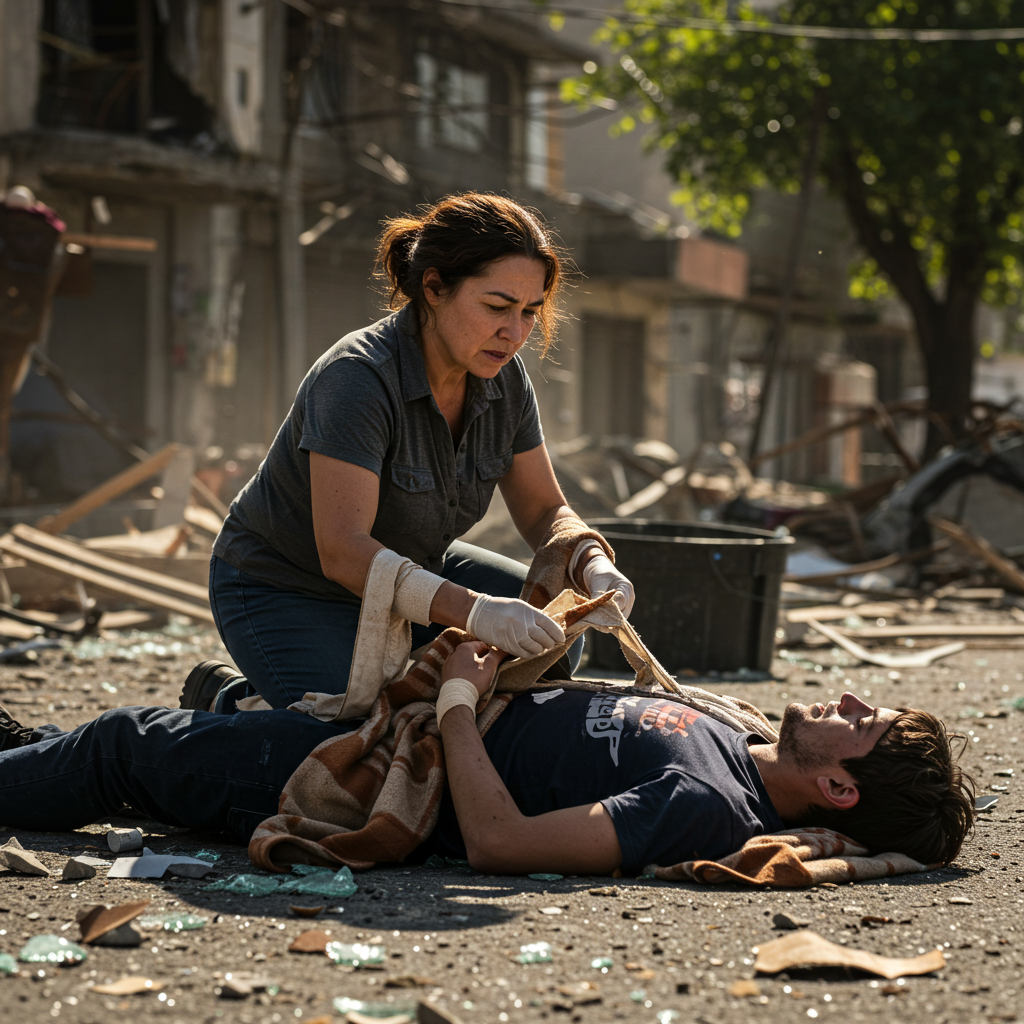
- In a mass casualty event or natural disaster, hospitals may be overwhelmed, and ambulances might not reach you at all. Roads could be impassable, communication systems down, and medical supplies scarce. What happens when you're the only one who can provide care?
- Imagine keeping someone stable for hours—monitoring their breathing, controlling their bleeding, preventing shock—while knowing that help isn’t just around the corner. Do you have the training to make the right calls under pressure?
- WFR doesn’t just teach you how to react; it teaches you how to think critically in the worst conditions. You’ll learn how to assess injuries and decide: Can this person hold on until EMS arrives, or do I need to intervene immediately? What can I use around me to create makeshift medical supplies? How do I ration my resources when I don’t know how long it will take for help to come?
In extreme situations, you won’t have the luxury of waiting for someone else to take charge. With WFR training, you become the responder—capable, decisive, and ready to take action when it matters most.
Urban Disasters: Be Ready When Help is Overwhelmed
Cities feel safe—until disaster strikes. One moment, everything is normal. The next, sirens scream, power flickers, and panic spreads. Emergency services are instantly overwhelmed, calls flood 911, and ambulances are stuck in gridlock. People are stranded, injured, and looking around for someone—anyone—who knows what to do. But what if help isn’t coming? What if you’re the only one who can act?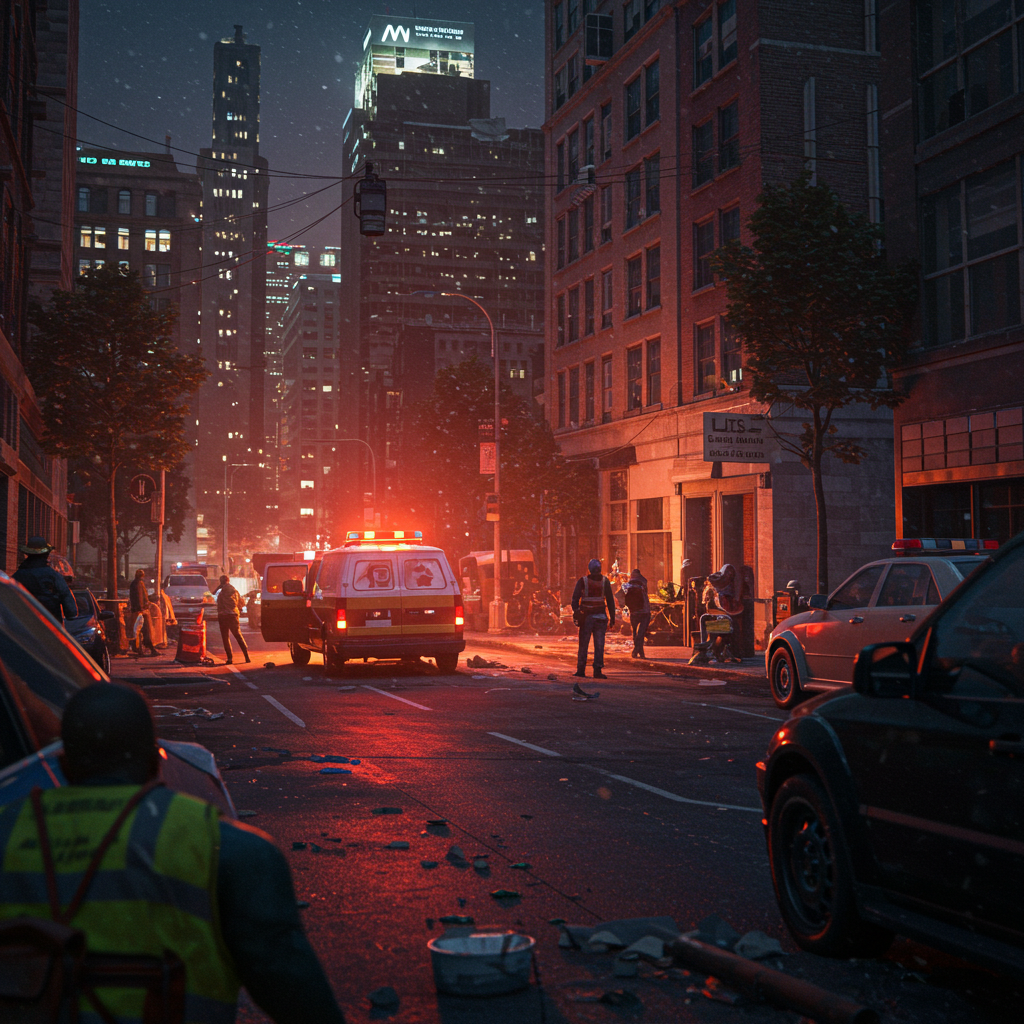
- Natural disasters don’t wait for EMS. Hurricanes, tornadoes, earthquakes—when roads are blocked, power is out, and hospitals are overflowing, survival is up to you.
- Mass casualty events happen fast. A shooting, riot, or terrorist attack erupts—first responders are stretched thin, and ambulances are delayed. Can you keep someone alive until help arrives?
- System failures leave you vulnerable. During pandemics and major blackouts, 911 response times double or triple. What happens when no one picks up the phone?
WFR training makes you the one who knows what to do. When others freeze, you take action. You become the person your family, friends, and community can count on—no matter what.
What You’ll Learn in Wilderness First Responder Training
Think you can handle a real emergency? Our 7-day Wilderness First Responder course isn’t just for medical pros—it’s for anyone who wants hands-on, real-world emergency training that goes far beyond basic first aid.
What You’ll Learn to Handle Like a Pro:
- Bleeding control – Stop life-threatening blood loss with tourniquets and hemostatic agents.
- Broken bones & dislocations – Splint injuries using whatever you have on hand.
- CPR & AED use – Save lives whether it’s an adult, child, or infant.
- Shock & patient stabilization – Keep someone alive when time isn’t on your side.
- Heart attacks, strokes & seizures – Recognize the signs and take action fast.
- Allergic reactions & anaphylaxis – Handle asthma attacks and severe allergic responses.
- Environmental threats – Treat hypothermia, heat stroke, and altitude sickness like a seasoned pro.
- Improvised wound closure – When stitches aren’t an option, you’ll know what to do.
- Evacuation & rescue techniques – Because sometimes, you can’t wait for help.
- Crisis leadership & decision-making – Stay sharp under pressure when every second counts.
This isn’t a sit-in-a-classroom-and-take-notes kind of course. You’ll be in the field, working through real-world medical simulations, nighttime rescues, and high-stress drills. Because emergencies don’t happen in perfect conditions—and neither does this training.
Will You Be Ready When It’s Your Turn?
Most people like to believe they’ll rise to the occasion—that when disaster strikes, some hidden instinct will kick in, and they’ll suddenly know exactly what to do. But the truth? That’s not how it works.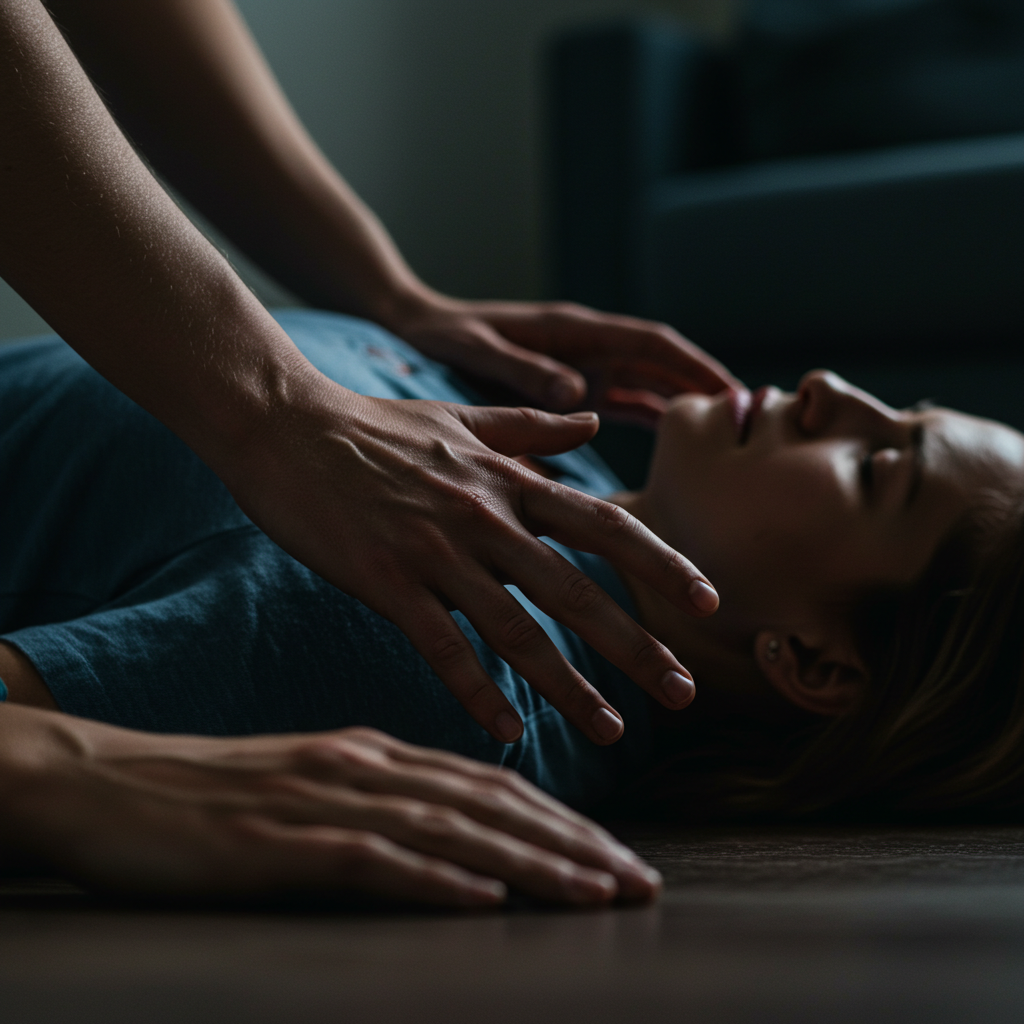
In high-stress situations, your brain doesn’t magically get sharper. It gets slower. Your hands shake, your thoughts scramble, and if you’ve never faced that kind of pressure before, panic takes over. You don’t rise to the occasion—you fall back on your training.
That’s why this matters.
Because one day, it won’t just be a headline or a stranger on the ground. It’ll be someone you love.
Your kid takes a bad fall and isn’t breathing. Your best friend is bleeding, and no ambulance is coming fast enough. Your partner clutches their chest, gasping for air, and every second feels like an eternity.
In that moment, you won’t have time to wish you had prepared. You’ll either know what to do—or you won’t.
WFR training ensures that when it matters most, you don’t freeze. You act. You save a life.
About the Author
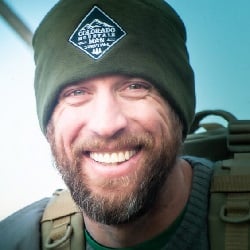 Jason Marsteiner is the founder and lead instructor at The Survival University, where he has dedicated his life to teaching practical survival skills that apply to both the backcountry and everyday emergencies. With years of hands-on experience in wilderness survival, land navigation, and emergency preparedness, Jason understands that true readiness isn’t about gear—it’s about knowledge and training.
Jason Marsteiner is the founder and lead instructor at The Survival University, where he has dedicated his life to teaching practical survival skills that apply to both the backcountry and everyday emergencies. With years of hands-on experience in wilderness survival, land navigation, and emergency preparedness, Jason understands that true readiness isn’t about gear—it’s about knowledge and training.
Born and raised in the mountains of Colorado, Jason’s background in wilderness survival was forged through real-world experience. He has trained extensively in austere environments, from the forests of Missouri to the mountains of Colorado to the desert of Arizona, and even in the jungles of Costa Rica, relying on minimal tools to survive. He holds certifications in Wilderness First Responder (WFR) and SAR tracking and has taught countless students how to stay alive when 911 isn’t an option.
Jason doesn’t believe survival training is just for hardcore adventurers—it’s for everyone. Whether you're a day hiker, a city dweller, or a parent wanting to protect your family, the ability to act in an emergency can mean the difference between life and death. His goal is simple: to make sure you don’t freeze when it matters most and to get everyone back home safe.
When Jason isn’t teaching survival courses, he’s designing knives, mentoring, or simply spending time in the city just like you. Whatever he is doing, he is always honing the skills that turn fear into confidence.
Leave a Comment
What Nash Quinn’s Disappearance Teaches Us About Being Ready for the Backcountry
Nash Quinn vanished on a routine ride near Laramie. His story is a powerful reminder of why preparation, communication, and humility in the outdoors matter...
Recommended Gear List For Courses
Colorado is a cold weather climate most of the year and with our survival school at 9400 feet, it can get frigid at night, even…
Survival Training Near Me: Why the Best Might Be Worth the Trip
Discover why the best survival training might mean leaving the city. Explore The Survival University’s 4000+ acres and 20+ expert instructors!
Bugging In Guide Part 1: Drain Your Water Heater
Learn how to access hidden water in your home by safely draining your water heater during emergencies. A must-read for urban survival and bugging in.
Flint Knapping for Beginners: My Hilarious Failures & How to Do It Right
Flint knapping sounds easy—until you try it. Here’s my journey of frustration, flying shards, and why some people (but not me) make it look effortless.
What to Do When You Encounter a Wolf in the Wild
Wolves are neither villains nor heroes—they’re survivors. Explore their role in nature, the myths that surround them, and what we can learn from their resilience.
